Rebels in Libya are attacking the last pockets of resistance to Gaddafi’s forces
1. Libyan revolutionary in the shelter during the battle with the loyalists of Muammar Gaddafi in the city of Bani Walid, one of the two fortresses of the most convinced supporters of the dictator. (Joseph Eid / AFP / Getty Images)
2. Rebels fired rockets at the city of Sirte, September 24, 2011. Supported aviation NATO rebels broke into Sirte on Saturday, but were forced to retreat, suffering casualties from sniper fire. (Reuters / Goran Tomasevic)
3. The rebel uses a poster with Moammar Gaddafi as a rug on the floor of a car, 25 September 2011, the eastern edge of Sirte. (Reuters / Asmaa Waguih)
4. Tank forces of the interim government near the outskirts of the city of Bani Walid, 21 September 2011 of the year. (Joseph Eid / AFP / Getty Images)
5. Libyans chant slogans against Muammar Gaddafi on Martyrs' Square in Tripoli, previously called Green Square, 9 September 2011 of the year. (Reuters / Anis Mili)
6. Libyans during the speech of the National Transitional Council leader Mustafa Abdel Jalil on Martyrs' Square in Tripoli, September 12 of 2011. The leader of the revolutionaries arrived in Tripoli to take the place of the ousted Gaddafi government. (AP Photo / Francois Mori)
7. 18-year-old Mohammed Sayyad shows his pendant with the Libyan flag, Tripoli, September 26 2011. (AP Photo / Alexandre Meneghini)
8. The leader of the National Transitional Council, Mustafa Abdel Jalil, shakes hands with a wounded rebel. Jalil, along with British Prime Minister David Cameron (right) and French President Nicolas Sarkozy (center), visited the wounded at the Tripoli 15 September 2011 hospital. Nicolas Sarkozy became the first president to visit the new Libya. (Eric Feferberg / AFP / Getty Images)
9. Musicians Aymen Alamen (left) and Osman Ben Khalifa rehearse revolutionary songs in the center of Tripoli, September 18, 2011, before a concert on September 27 Martyrs Square. Osman Ben Khalifa returned to Libya to fight for his country with the rebels. The musicians wrote revolutionary songs that will help people remember why they overthrew the dictator. Although they never held weapons before the uprising, now Ben Kalif's rifles and guitar stand nearby. (Leon Neal / AFP / Getty Images)
10. A cloud of smoke spreads over Tripoli after the explosion of military warehouses belonging to the army of Gaddafi, September 24 2011. The exact causes of the explosions that shook the entire city have not yet been established. (AP Photo / Bela Szandelszky)
11. Gaddafi loyalists in Tripoli Prison show insignia of victory, September 14 2011. (Reuters / Suhaib Salem)
12. A woman suspected of supporting Gaddafi behind bars in Misrata, Libya, September 22 2011. Prime Minister Gaddafi’s government was seized in Tunisia, and both NATO and the rebels warned the runaway dictator and loyalists that they had to hide for a short time. (AP Photo / Manu Brabo)
13. A fighter of the National Provisional Government is looking through binoculars at the city of Bani Walid, September 20 2011. The rebels suggest that it is there that the son of Gaddafi Seif al-Islam is located. (Joseph Eid / AFP / Getty Images)
14. A revolutionary fired a grenade launcher during a battle near the city of Sirte, September 26 2011. (Reuters / Goran Tomasevic)
15. A revolutionary shoots loyalists during a battle for a village near the city of Sirte, September 17 of 2011. (Reuters / Goran Tomasevic)
16. Wounded revolutionary near the town of Sirte, Libya, September 16 2011. In the city, Gaddafi’s supporters fired revolutionaries from minarets and upper floors of buildings. On the streets, the sides exchanged fire with rocket-propelled grenade launchers, rockets and large-caliber machine guns. (AP Photo / Manu Brabo)
17. Rebel on crutches shoots RPGs during a battle in Sirte, 24 September 2011. (Reuters / Anis Mili)
18. The rebel chooses his weapons to taste in the warehouse, recaptured and loyalists of Gaddafi near the city of Sirte, September 19 2011. (Reuters / Goran Tomasevic)
19. The rebels are sitting on a Soviet rocket Р-17 in a village near the town of Sirte, September 21 2011. (Reuters / Goran Tomasevic)
20. A revolutionary in animal skins during an attack on Sirte 26 September 2011. (Reuters / Esam Al-Fetori)
21. Women learn weapons in Benghazi, Libya, 25 September 2011. The revolutionaries offer military training to women who want to stand up for cities if Gadhafi’s forces suddenly return. The ousted dictator had a whole detachment of women bodyguards, but mostly according to the laws of the Islamic society, women remain aloof from military events. (AP Photo / Rami al-Shaheibi)
22. A Chinook helicopter takes off from a field hospital deployed by revolutionaries 50 km from Sirte, September 26 2011. (Reuters / Anis Mili
23. Medic supports a fighter who mourns a dead comrade killed by sniper fire in the city of Bani Walid, September 21 of 2011. (Reuters / Zohra Bensemra)
24. Demonstration to journalists of part of the lower jaw found in the mass grave of 1700 people executed in 1996 in the Abu Salim prison in Tripoli. For years, the Human Rights Group has demanded an answer from the Gaddafi regime about the fate of prisoners after the 1996 uprising of the year. (Leon Neal / AFP / Getty Images)
25. A woman looks at the rubbed dead insurgents posted on the wall of the court in Benghazi, September 10 2011. (Reuters / Asmaa Waguih)
26. A rebel next to a roman statue in a museum in 50 km from the city of Sirte in an area repulsed by Gaddafi loyalists, 23 September 2011 of the year. (Reuters / Asmaa Waguih)
27. Graffiti depicting Muammar Gaddafi and his public relations commissioner Youssef Shakir with a rat tail and a rosary, Tripoli, September 20 2011. Libyan artists enjoy their new freedom — for the first time in 42, people can express their opinions — and paint cartoons of Gaddafi on the streets of Tripoli. (AP Photo / Francois Mori)
28. A street vendor shows cartoons on Gaddafi on Martyrs' Square in Tripoli, September 25 2011. (Ahmad Al-Rubaye / AFP / Getty Images)
29. A girl in traditional Libyan attire during a charity event in favor of victims of the civil war, Tripoli, September 19, 2011. (Leon Neal / AFP / Getty Images)
30. The rebels on the pigeon farm in the house of Gaddafi in Fort Assdad, 170 km from the city of Sirte, September 13 2011. (Reuters / Goran Tomasevic)
31. The rebel is trying to put out the fire in the Gaddafi loyalist house in Tripoli, September 20 2011. Residents of the area set fire to several houses belonging to senior military officials from the Gaddafi government. (Reuters / Suhaib Salem)
32. Revolutionary patrol in the city of Herava 50 km from Sirte, September 21 2011. (Reuters / Asmaa Waguih)
33. A fighter supporting the Provisional Government is shelling the forces of Gaddafi in a battle on Al-Eta Street, 4 km from the center of Sirte, Libya, 24 September 2011 of the year. (AP Photo / Xinhua, Amru Salahuddien)
34. The rebels pray at the control point near the town of Abu Grain in 160 km from Sirte, September 12 2011. (Reuters / Goran Tomasevic)
35. Rebels and a prisoner from Chad, who, according to them, was a supporter of Gaddafi. The prisoner is taken away from the front line of the besieged city of Bani Walid, September 18 2011. (Reuters / Zohra Bensemra)
36. An ostrich in a revolutionary field camp near Sirte, September 23 2011. (Reuters / Goran Tomasevic)
37. The rebels fire a howitzer at Sirte, one of the two remaining fortified areas of Gaddafi’s loyalists, September 23 of 2011. (Reuters / Goran Tomasevic)
38. The hand of the deceased revolutionary, field hospital near Sirte, Libya, September 24 2011. (AP Photo / Manu Brabo)
39. Shootout at 6 km from the city of Sirte, September 26 2011. (Reuters / Asmaa Waguih)
40. A supporter of the Gaddafi regime goes home with a bottle of water and two bananas, after the rebels released him, 21 September 2011 of the year. (Reuters / Goran Tomasevic)
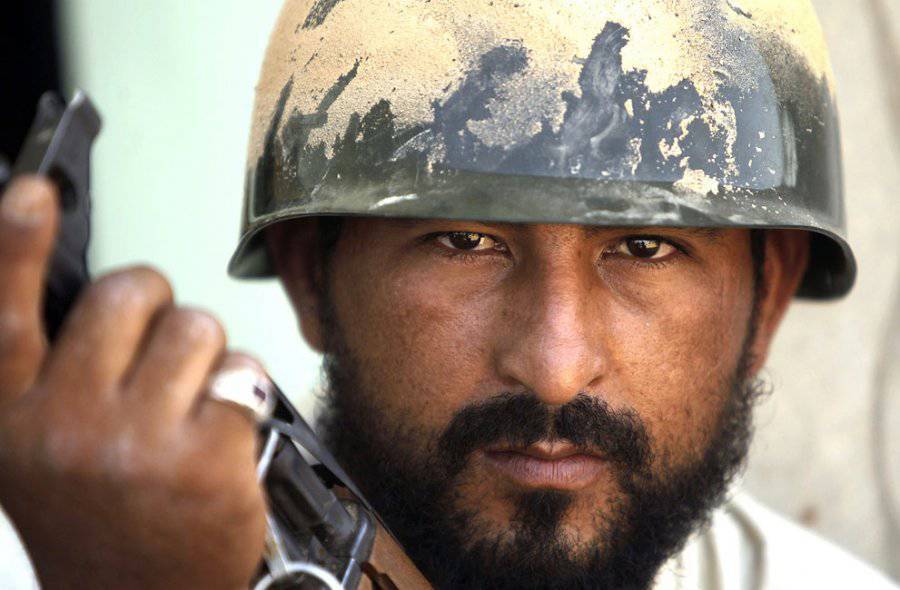
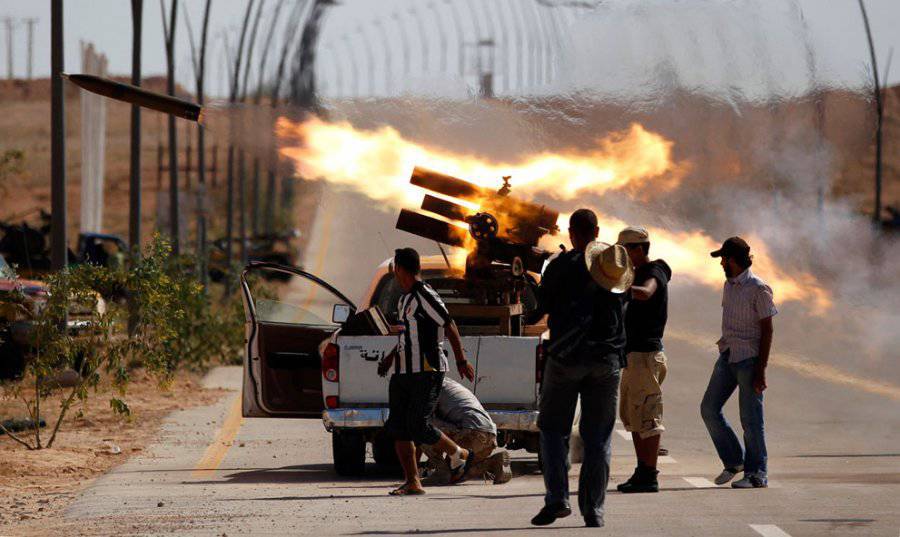
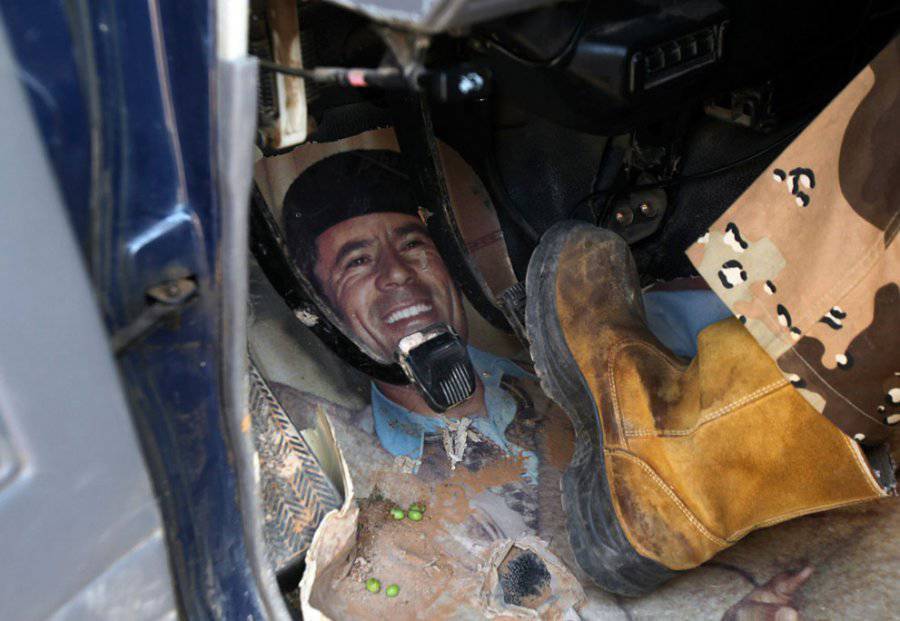
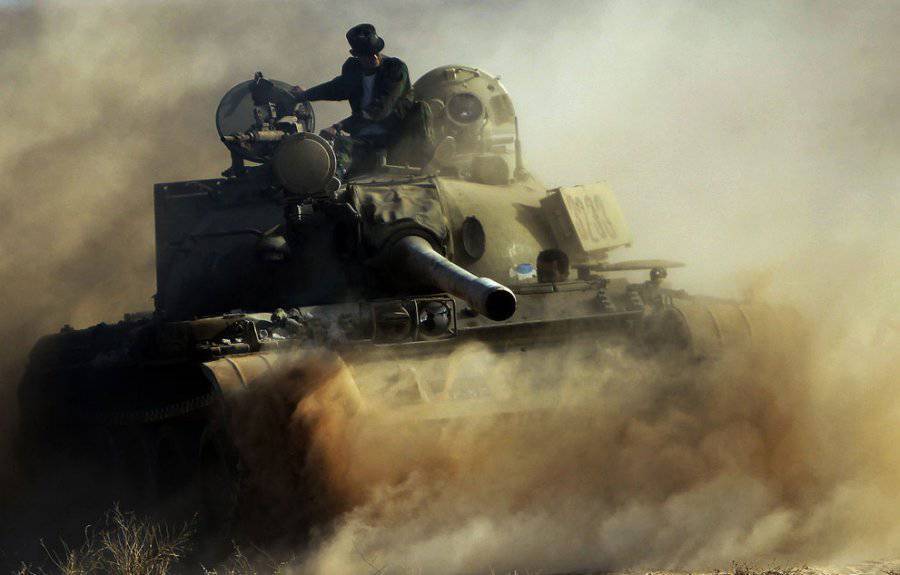
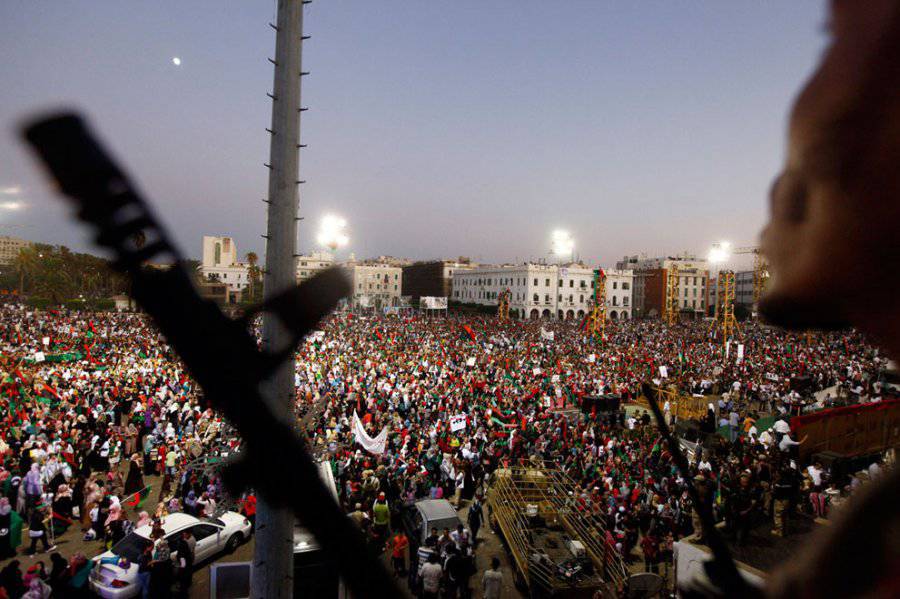
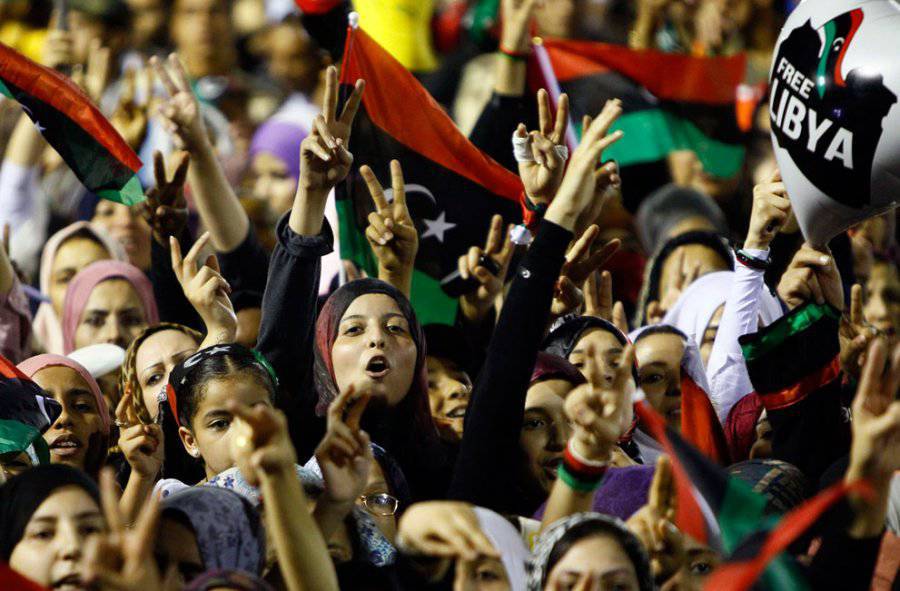
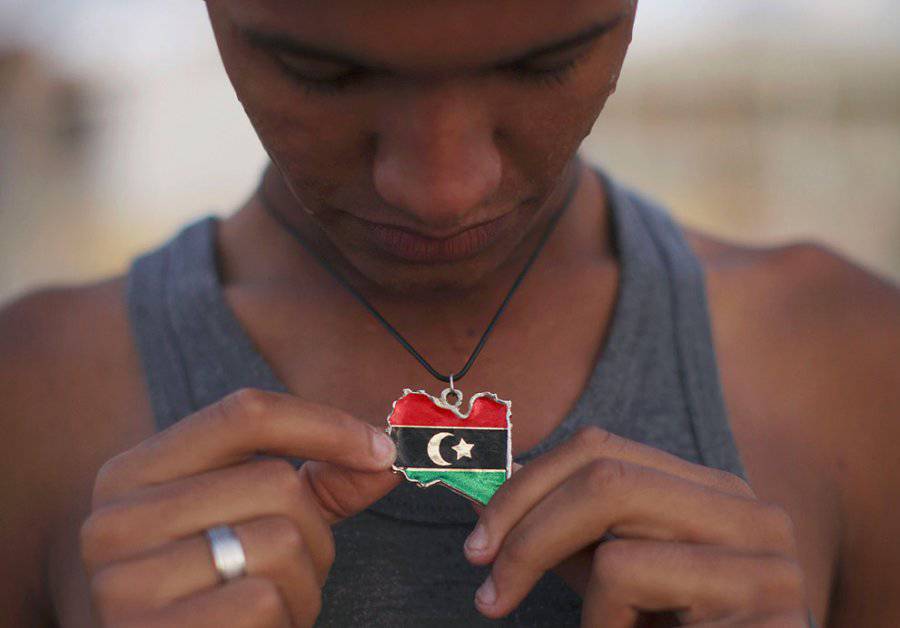
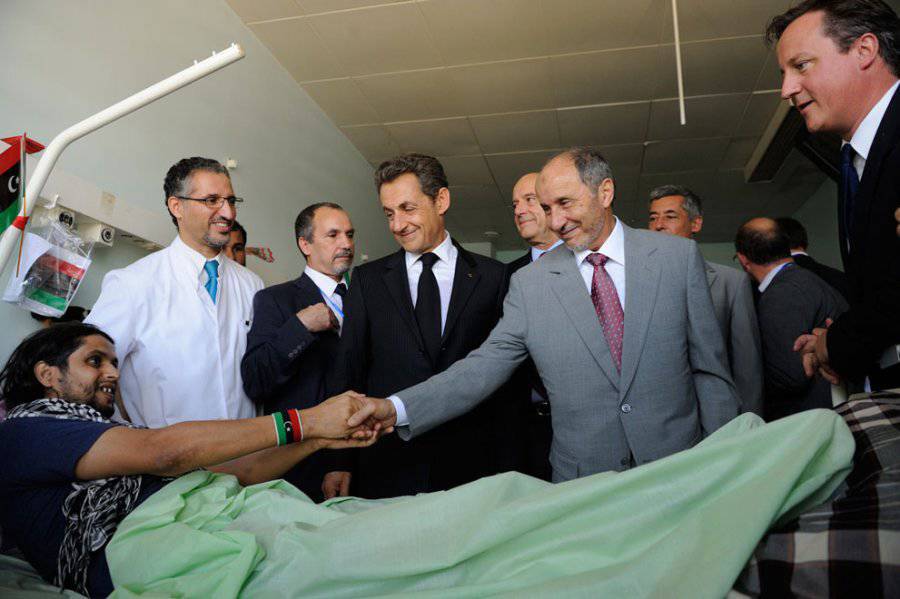
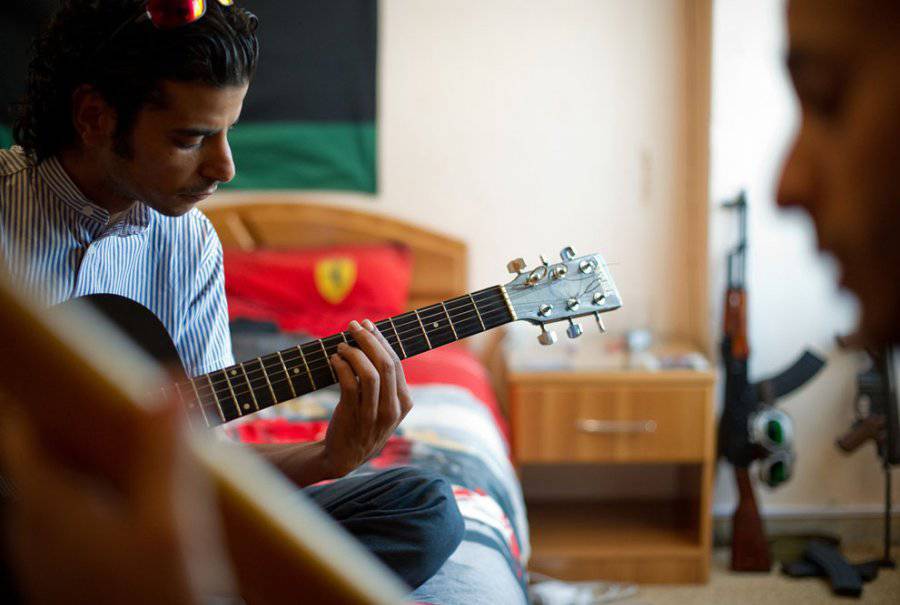
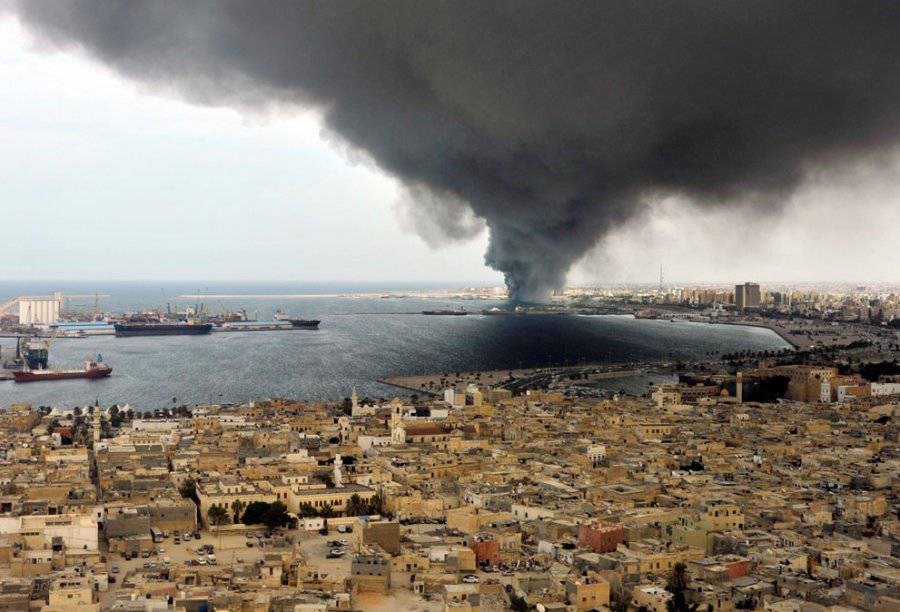
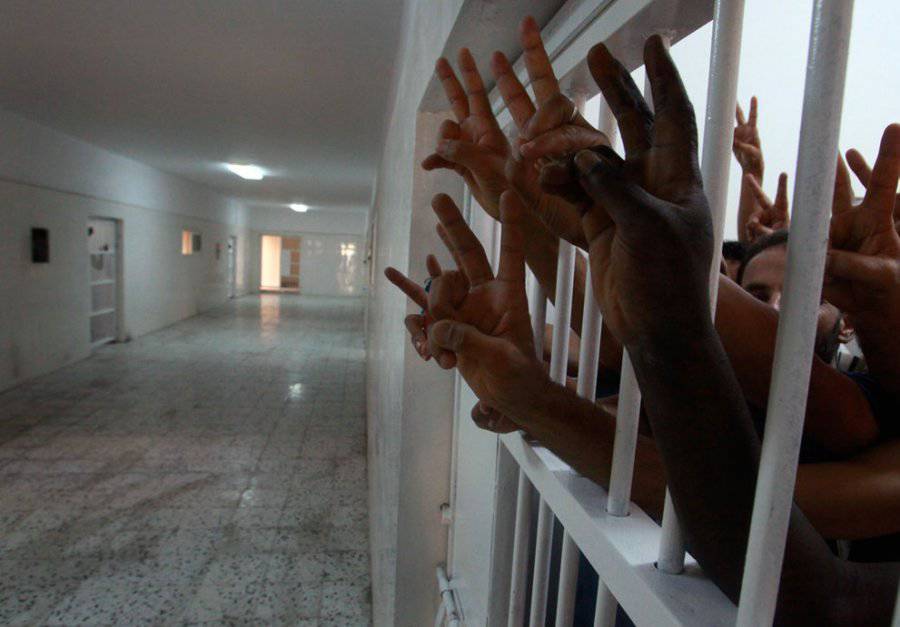
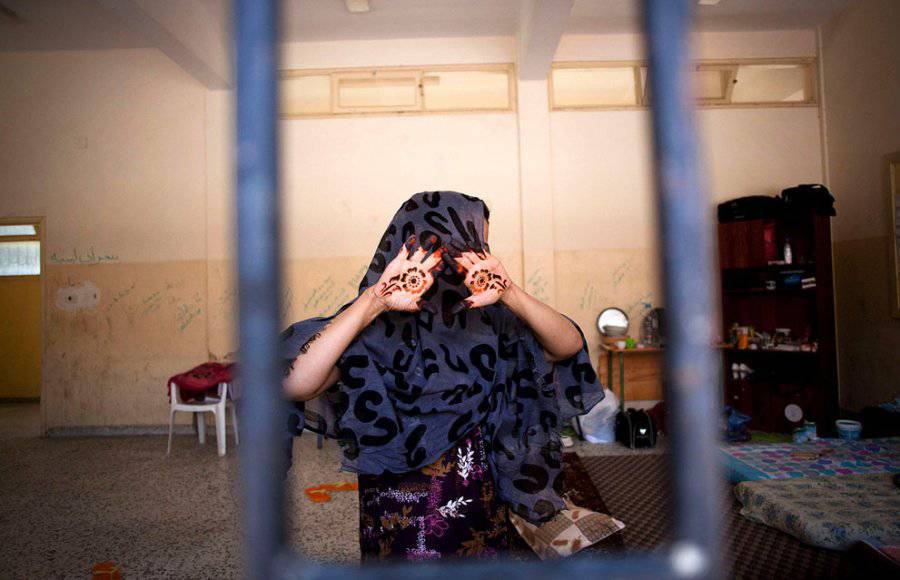
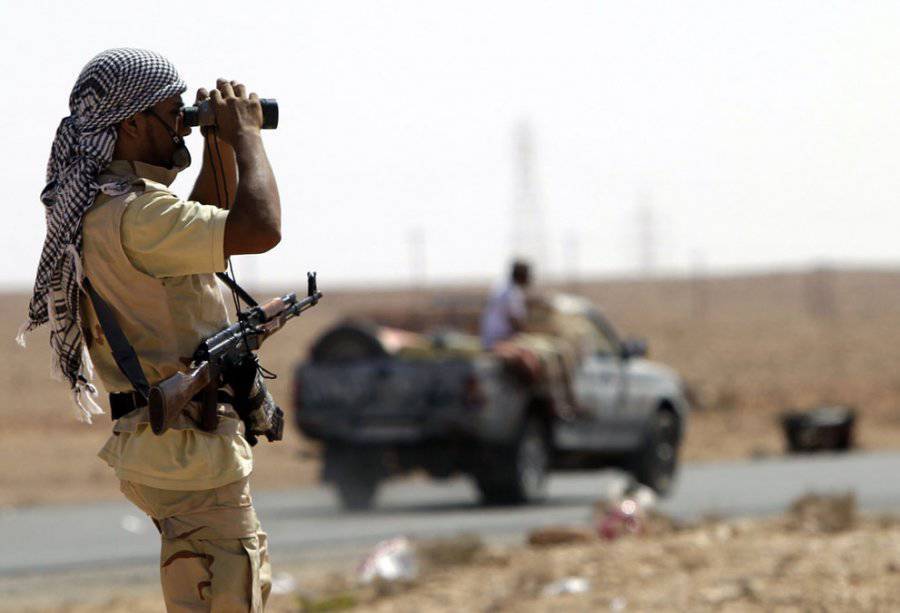
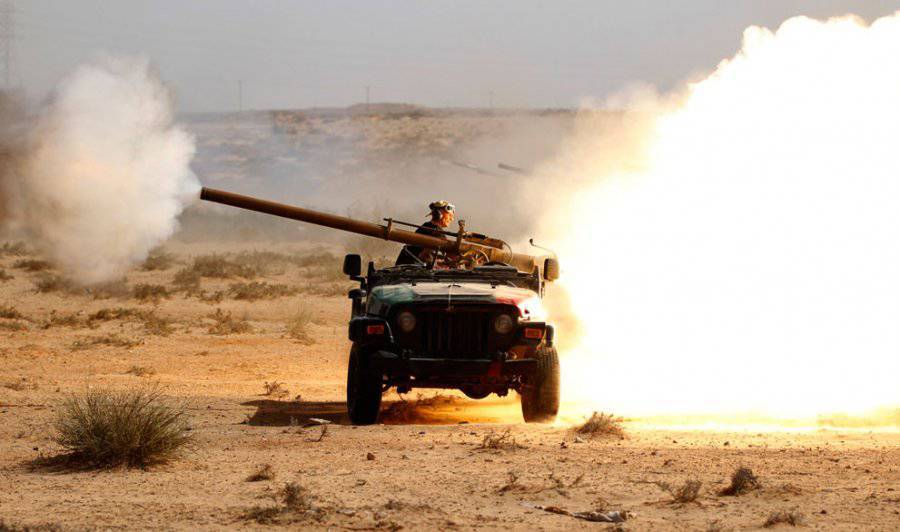
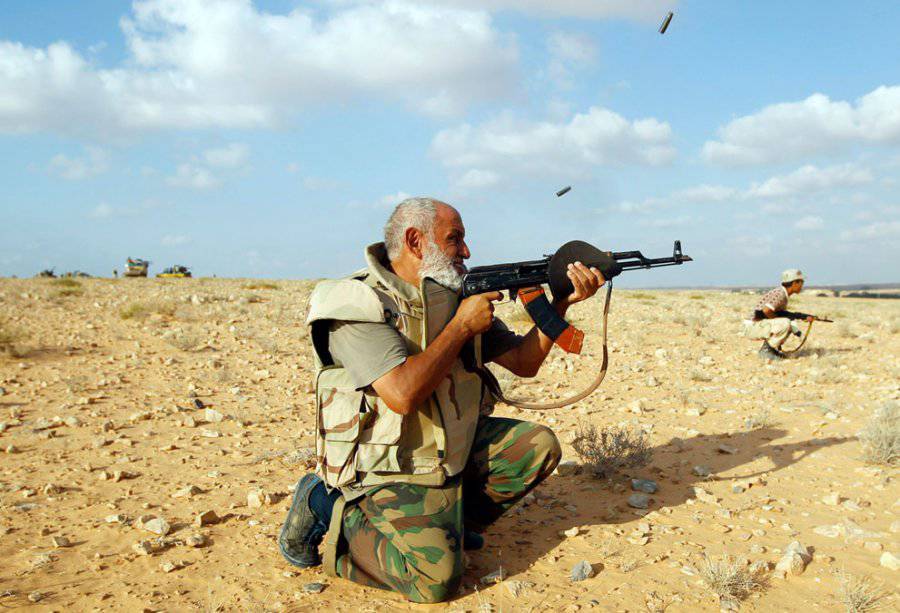
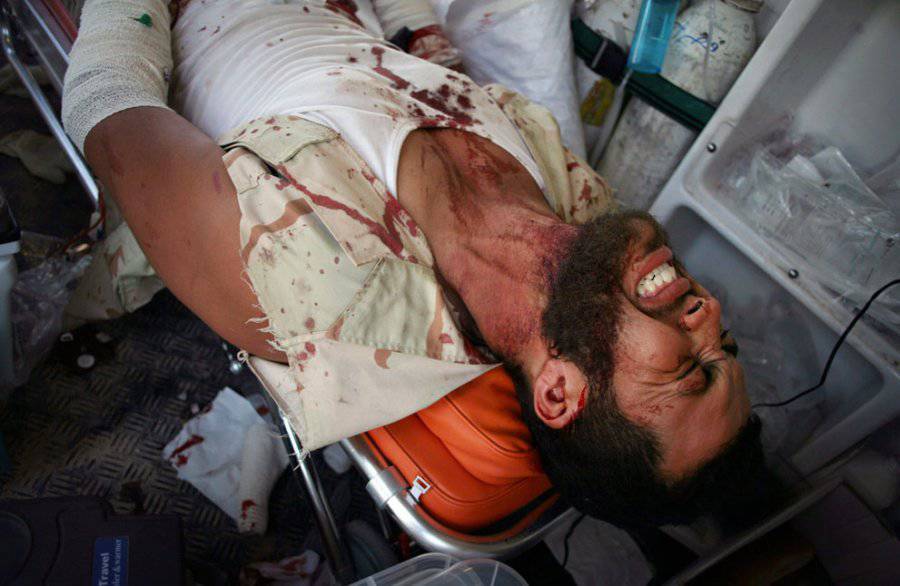
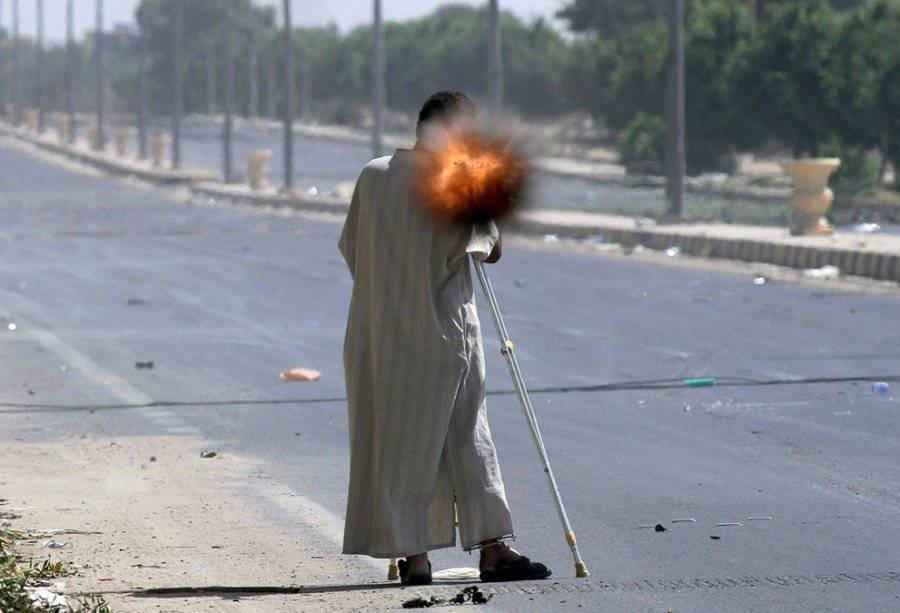
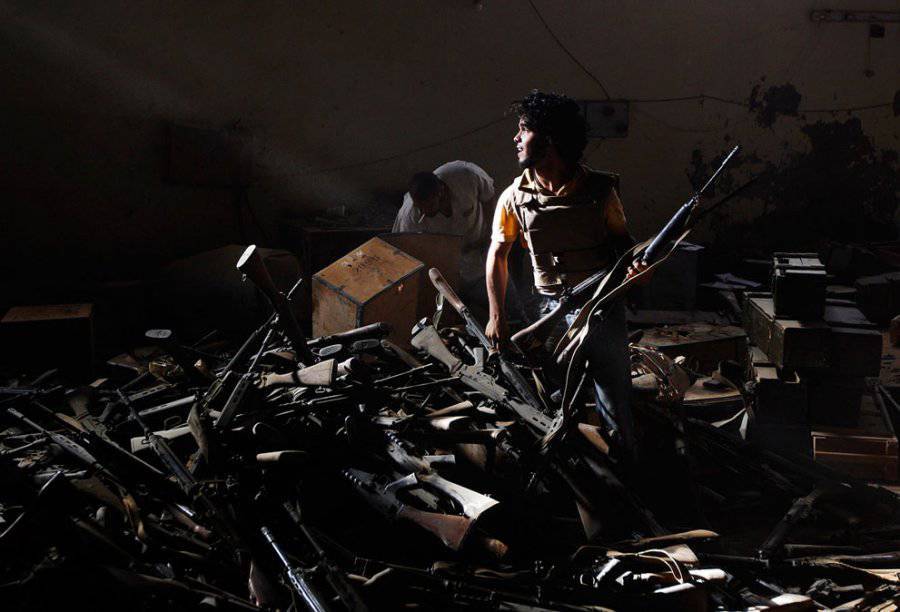
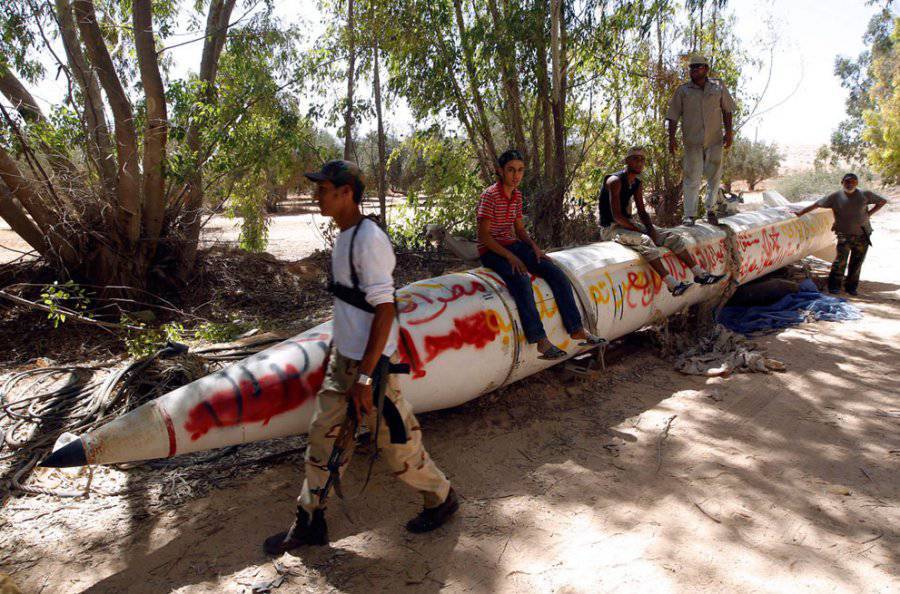
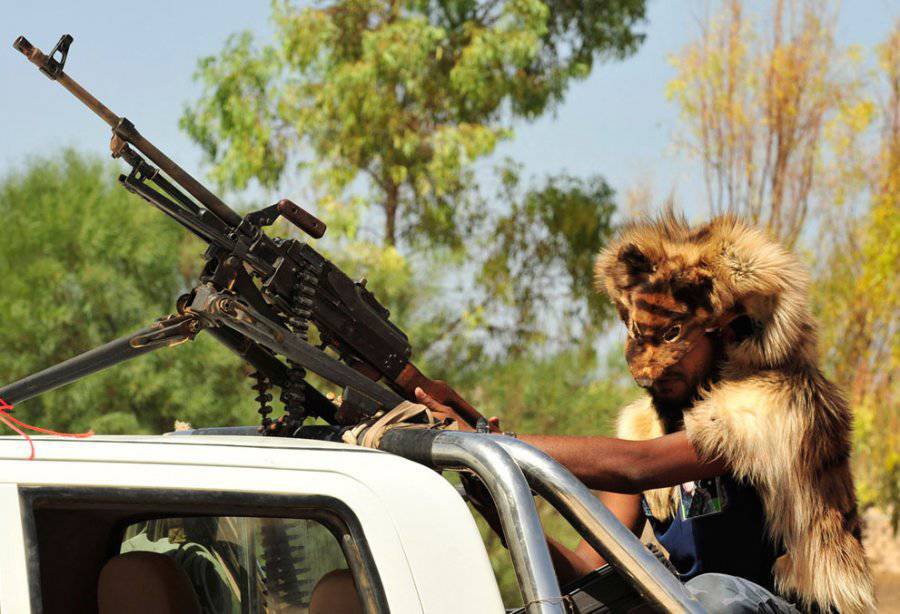
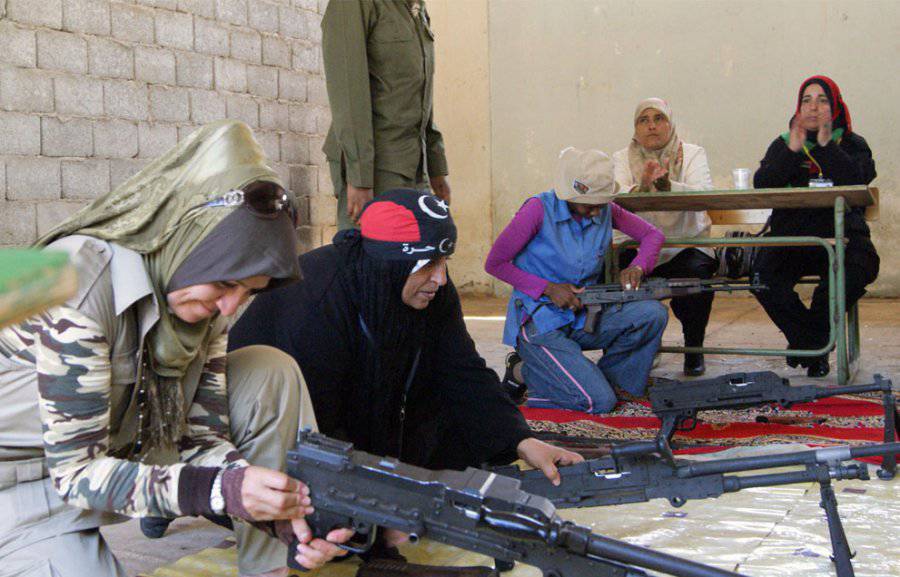
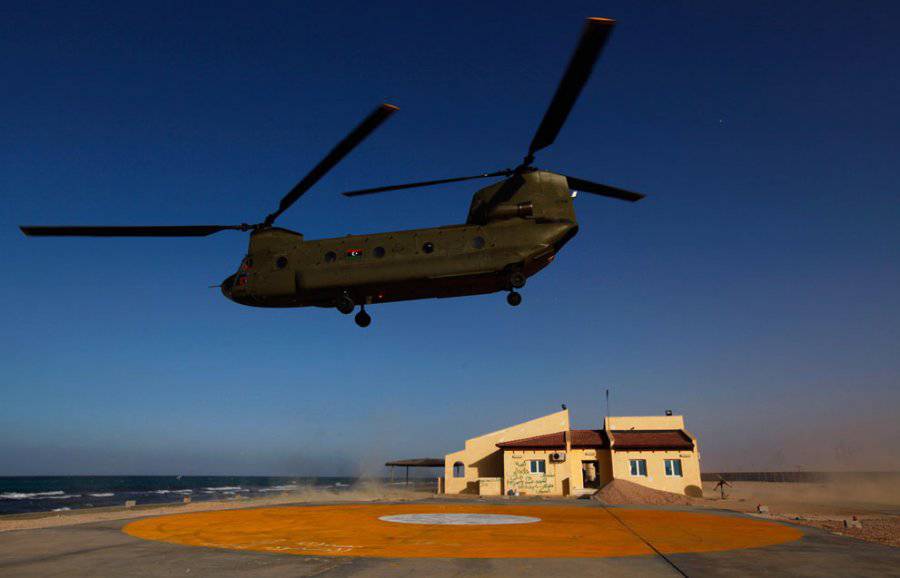
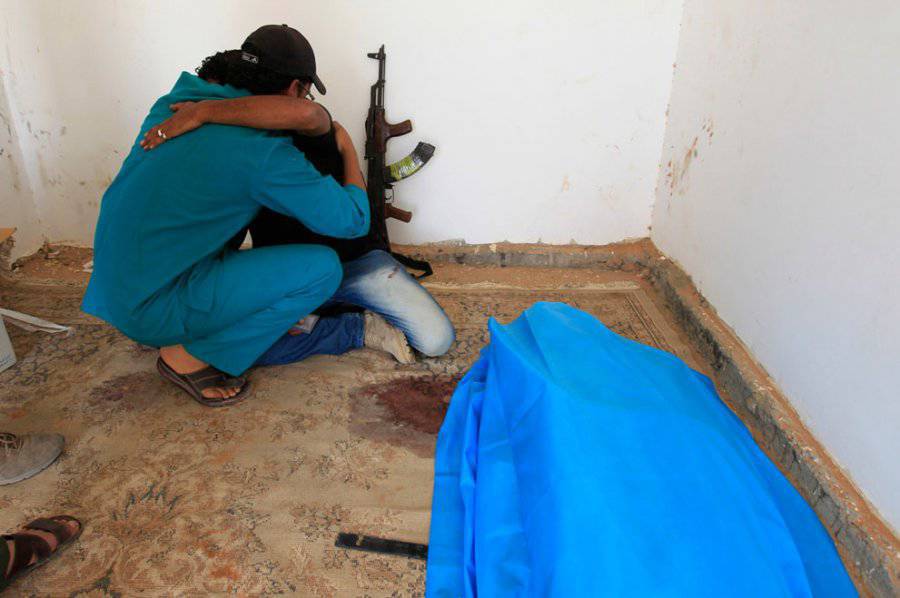
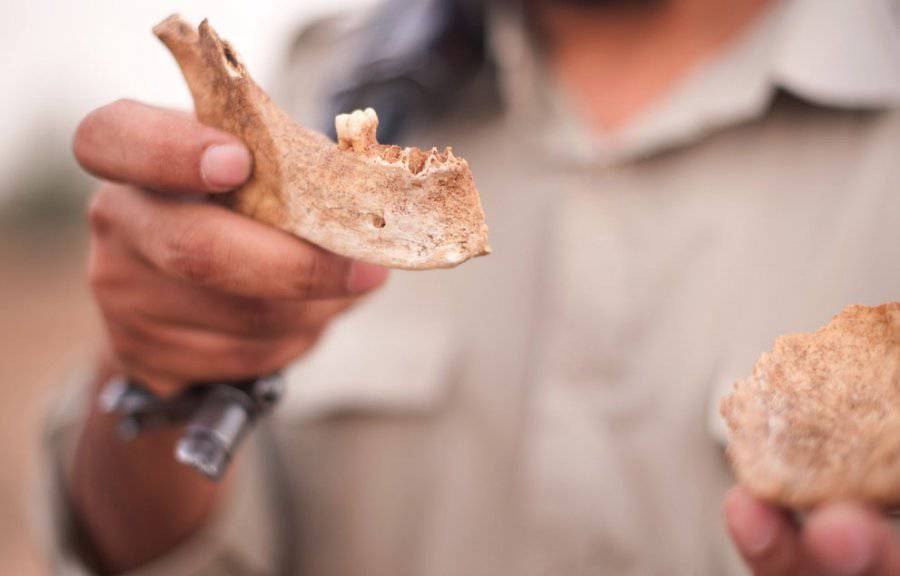
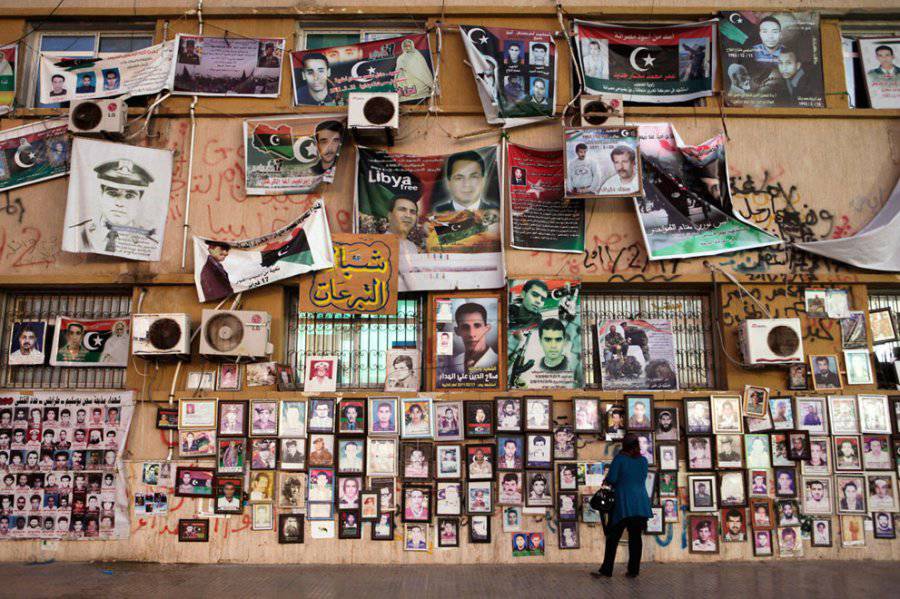
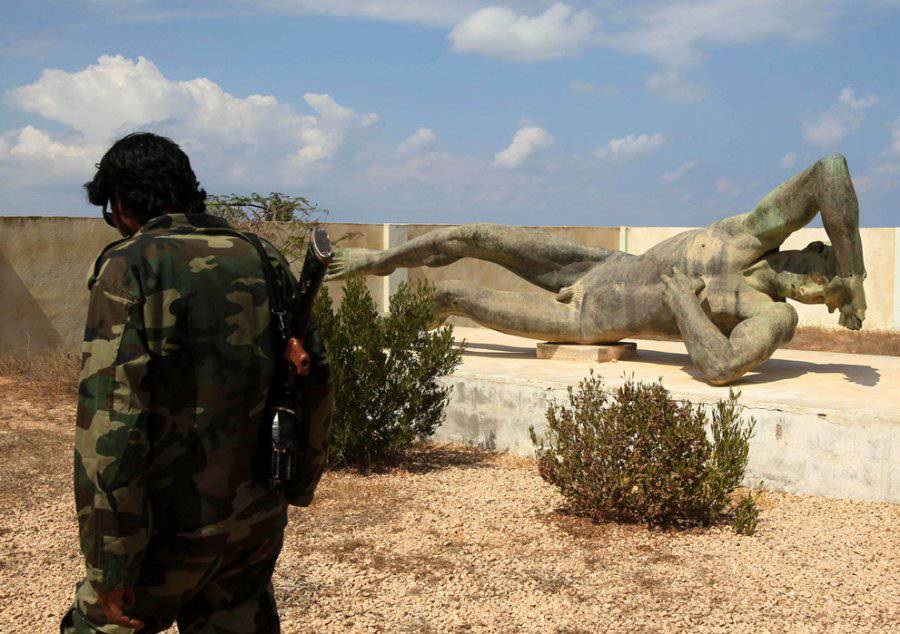
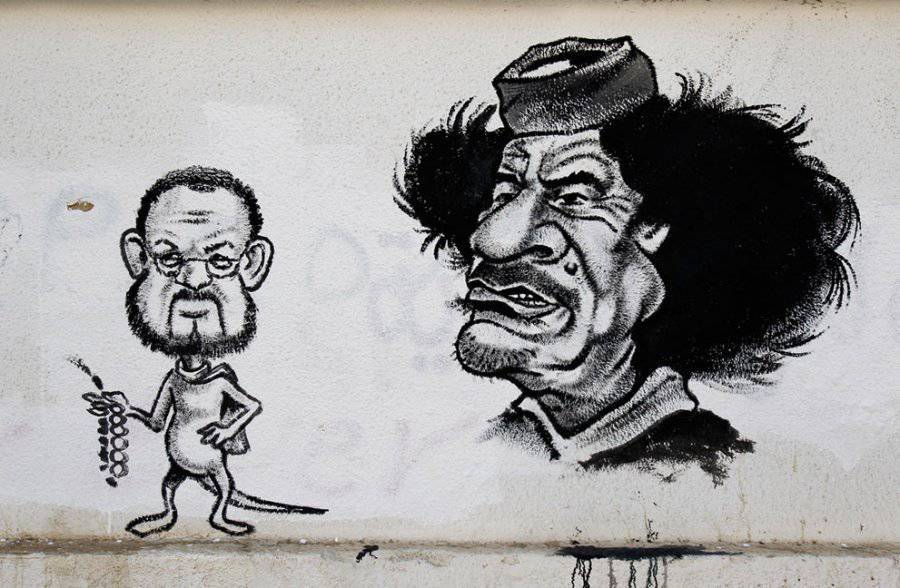
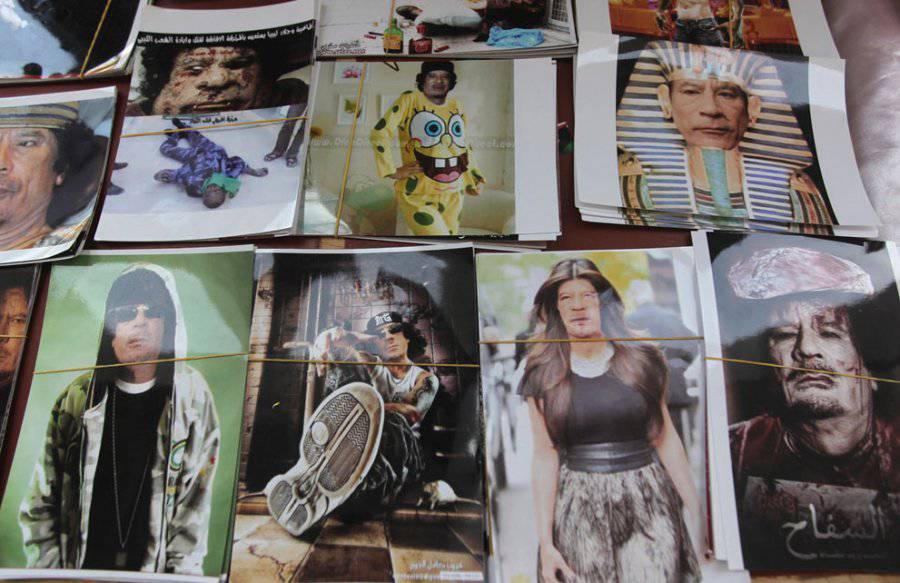
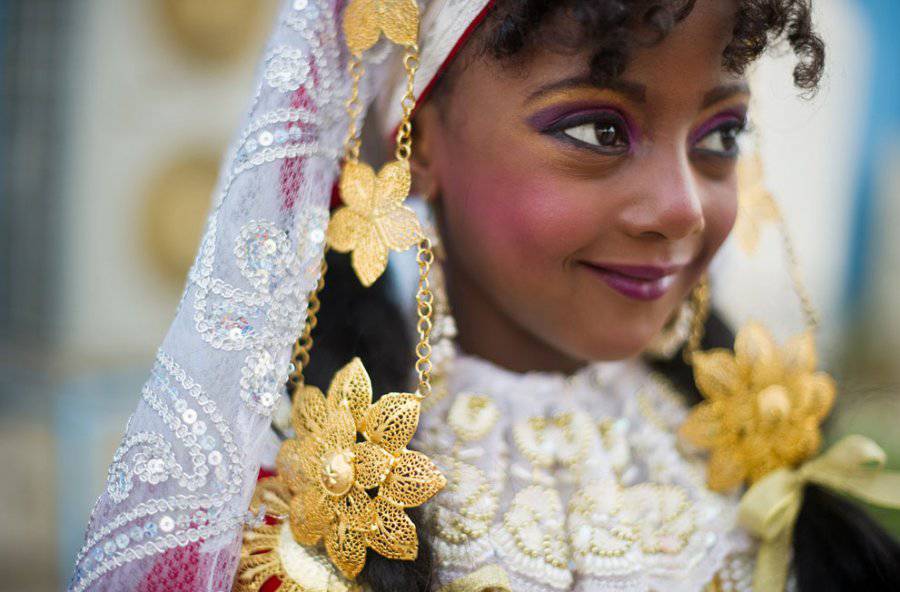
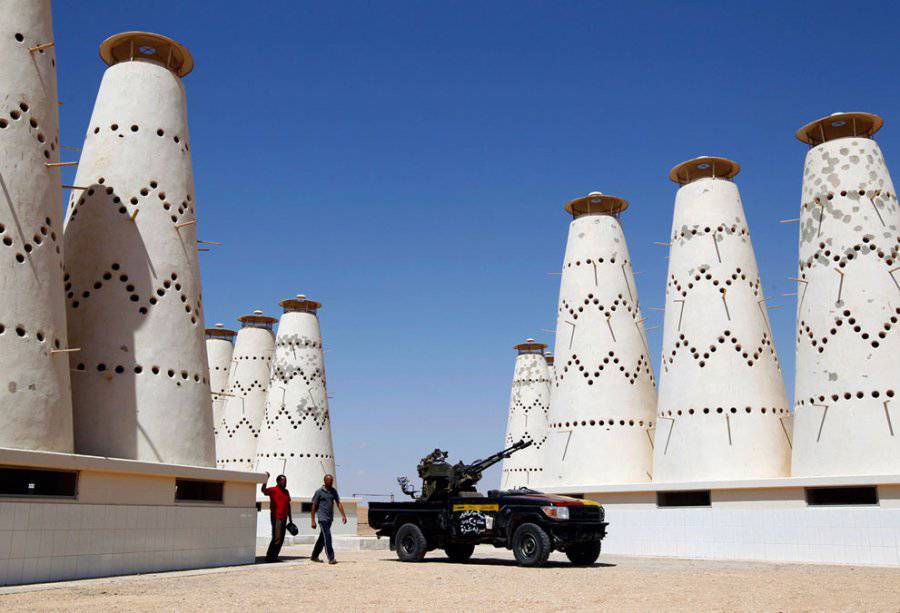
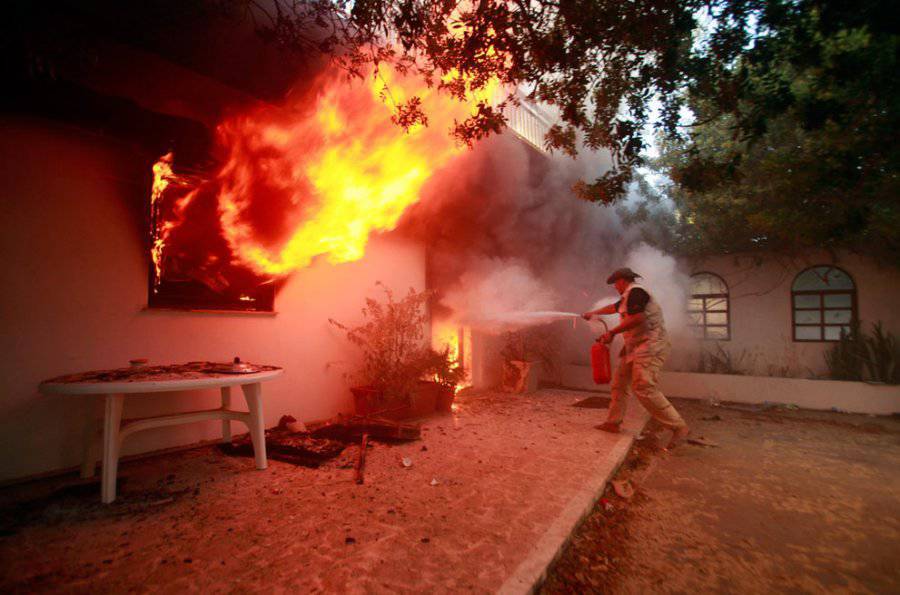
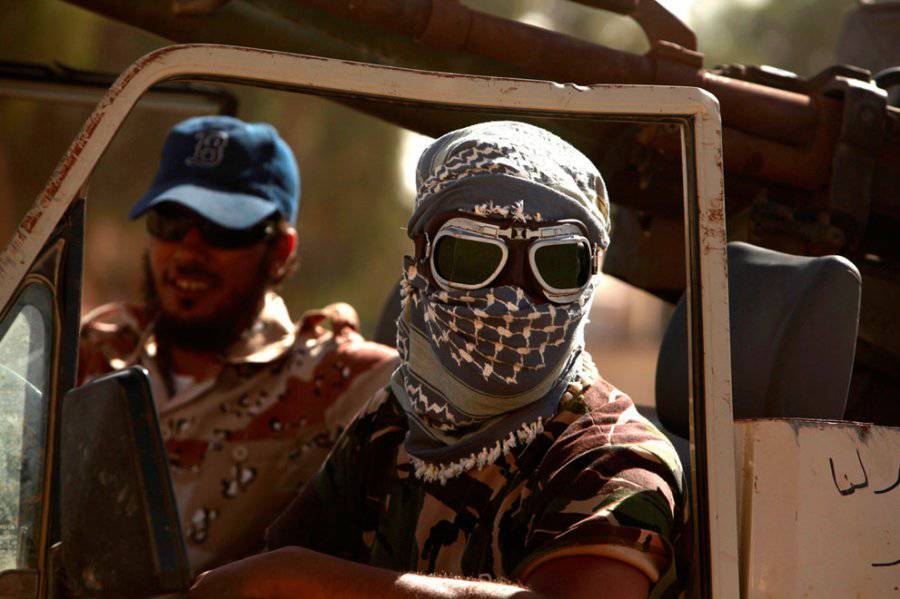
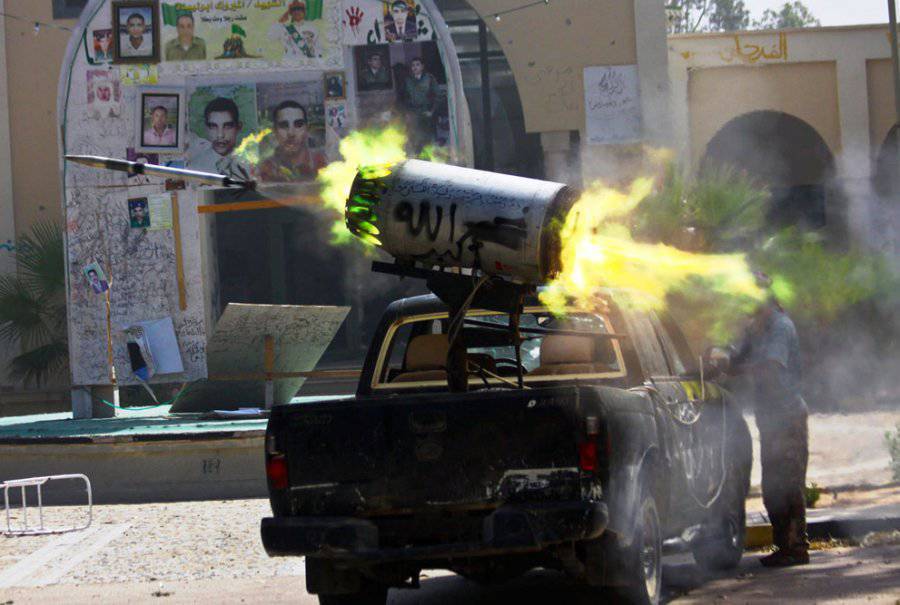
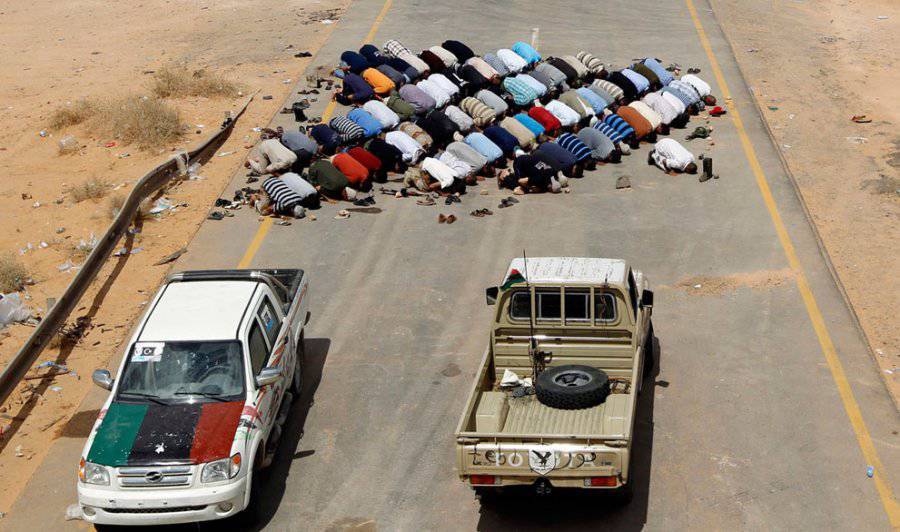
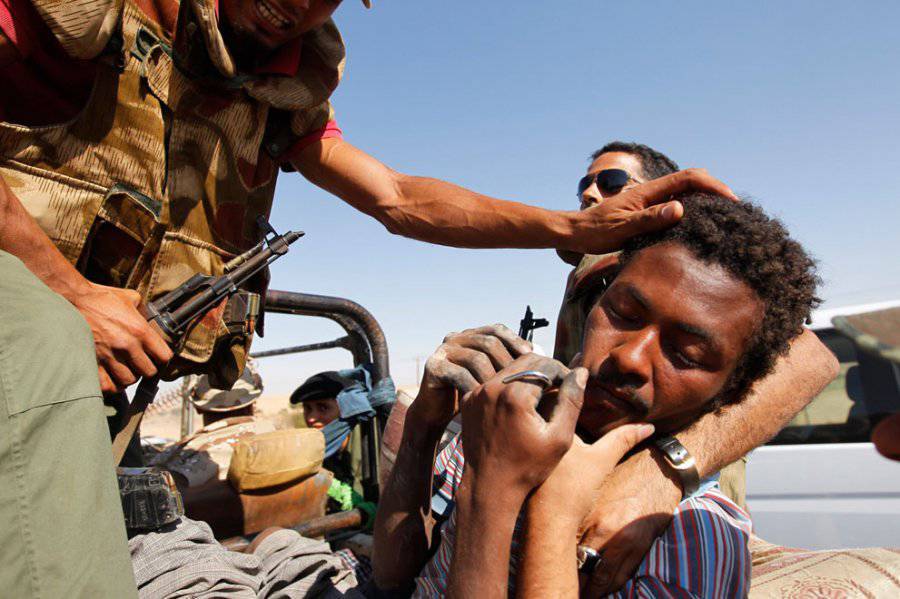
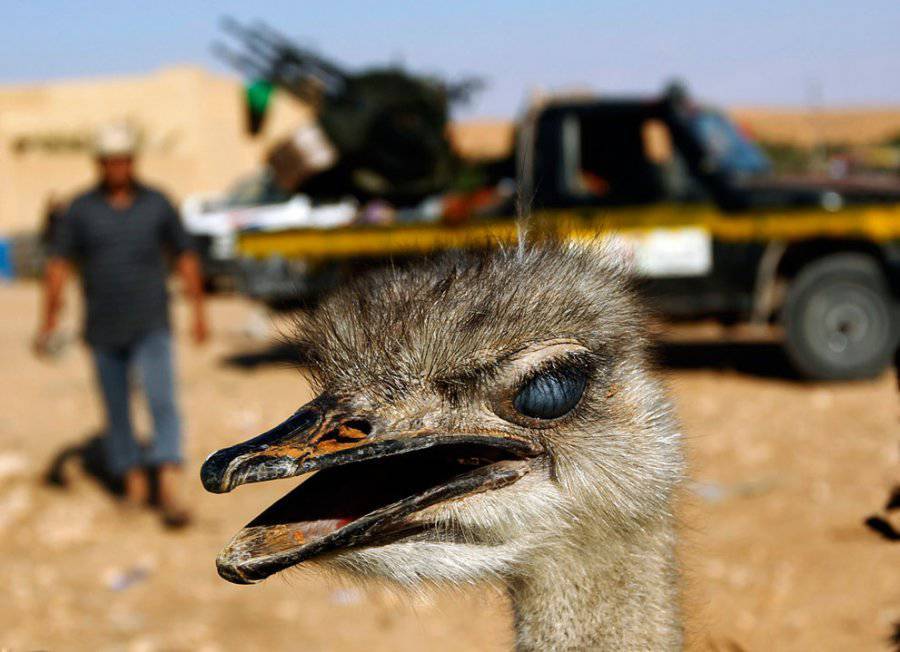
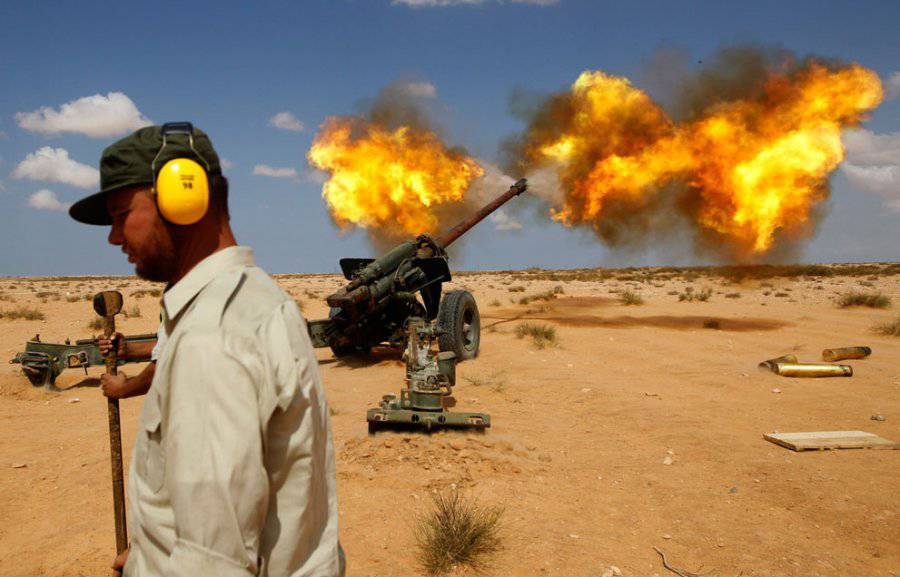
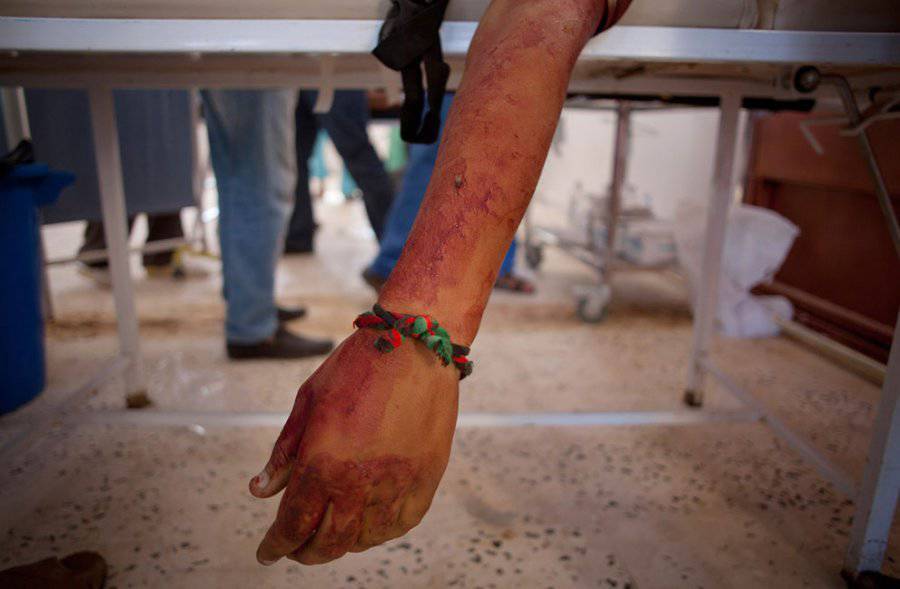
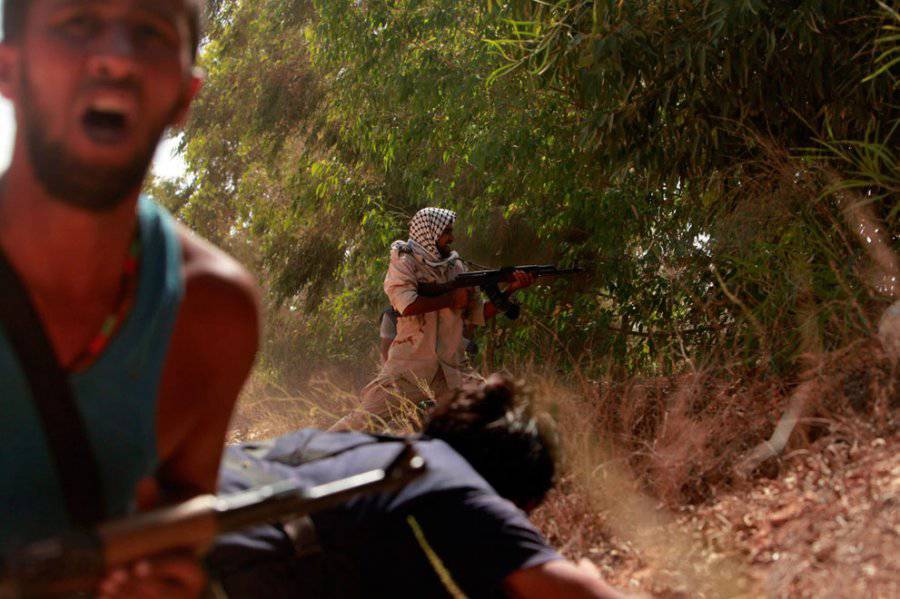
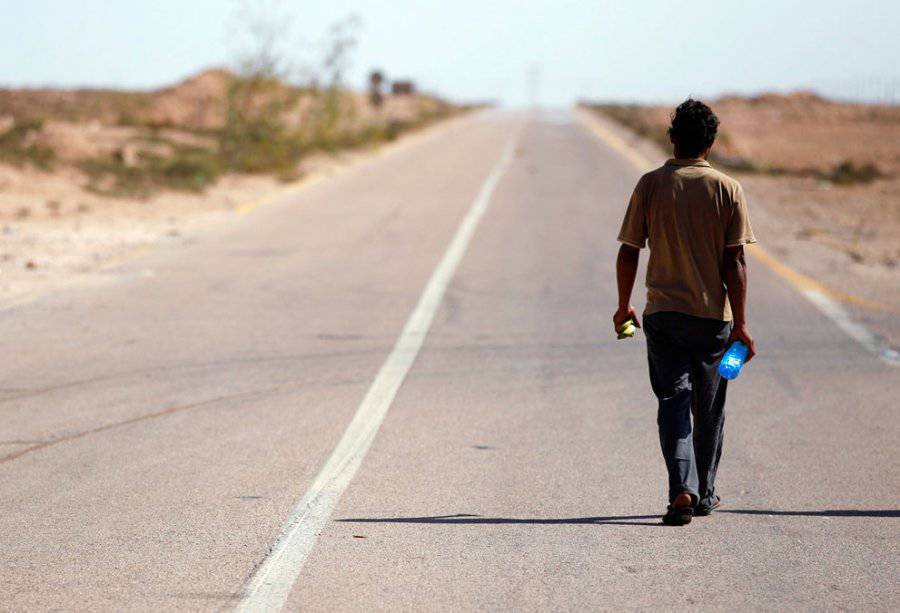
Information